General information
Client: commercial.
Location:Stretford, Manchester.
Area under treatment: over 200 sq. metres.
Technique: control of dug-out soil and cleaning off the equipment before leaving the site.
Status: completed.
Excavation of the trench was required to lay the pipes in the area occupied by Japanese knotweed. The Environment Agency recommends that a specialist company supervise all excavation works to prevent the spread of knotweed-containing material off-site. We supervision an excavation on a transport site with Japanese knotweed
Survey results
Japanese knotweed was scattered sporadically across the site. The height of the canes varied from 1 to 1.5 m.

Further, small, a couple of inches-long shoots were visible within 0.5 m from the edge of the proposed trench.
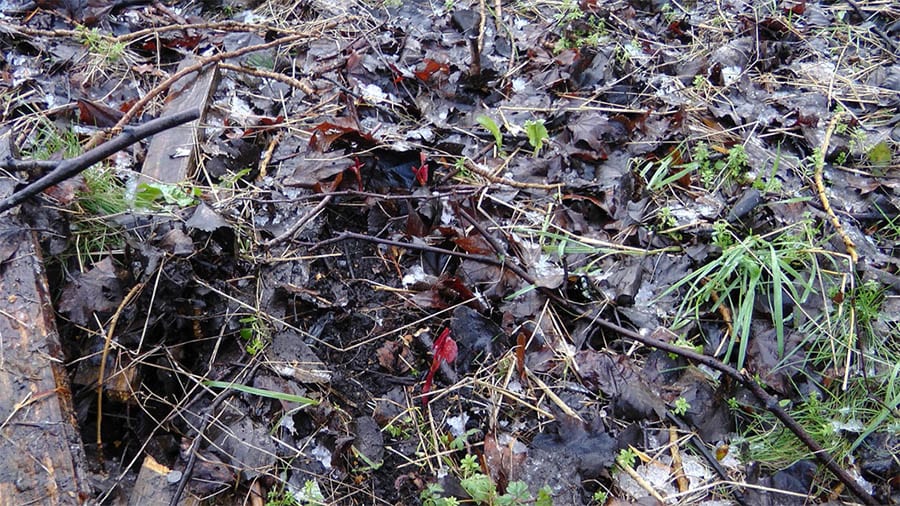
A 1 m deep by 1 m wide trench was to be dug on the site. Ten pipes 100 mm in diameter were to be laid to provide services.
Our Actions
Our surveyor in Japanese knotweed observed the area throughout all excavation work to make sure Japanese knotweed was appropriately treated and did not leave the site.
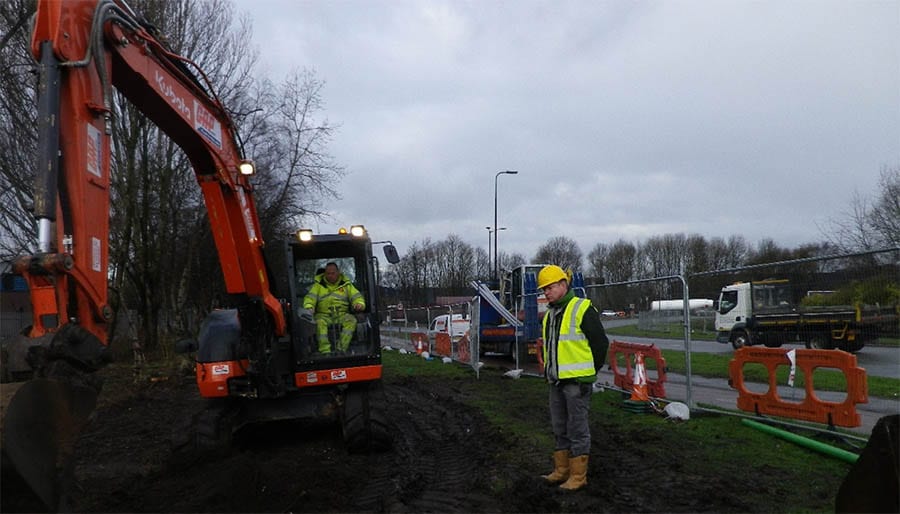
After the trench was dug out, the surveyor scrutinised it. It should be noted that the exterior of Japanese knotweed rhizomes is carrot-coloured, pale orange to light yellow. During the digging, the underground parts of the plants were hardly damaged; these features could be seen at the edges of the trench. However, features resembling Japanese knotweed rhizomes have not been found in the trench. Thus, the Japanese knotweed on site slightly affected the location of the trench.
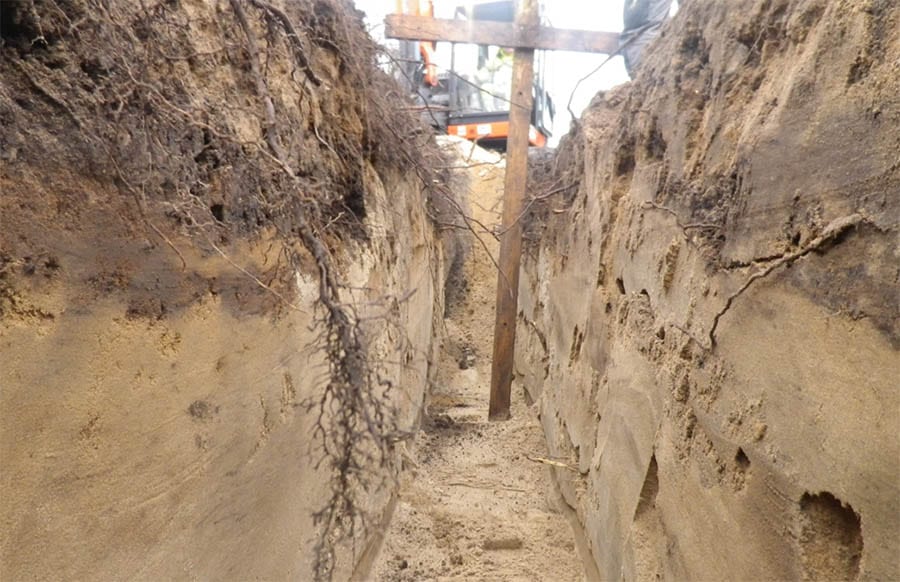
After inspecting the trench, the pipes were laid inside. Our surveyor assisted in cleaning the workers’ shoes prior to leaving the site when required to minimise the probability of spreading Japanese knotweed off-site.
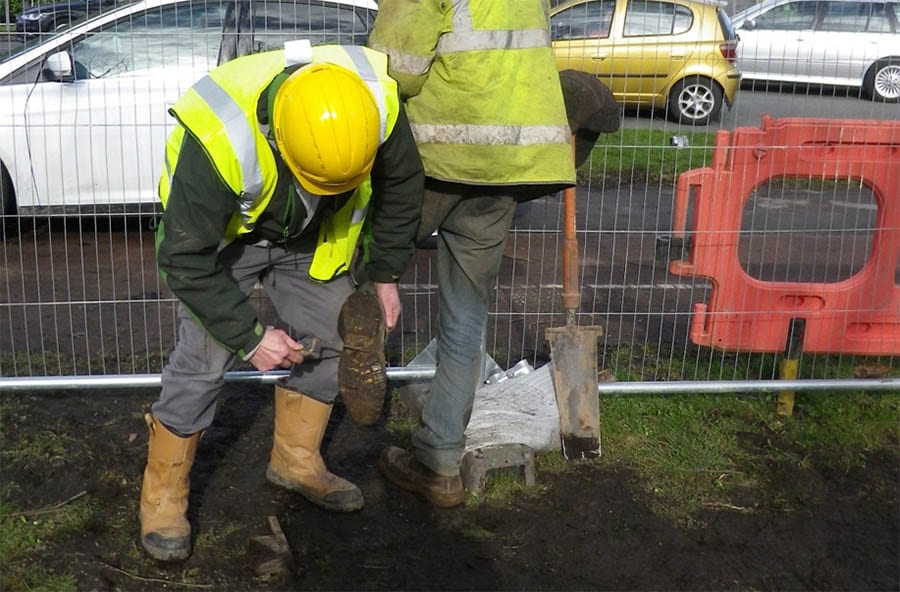
When excavation was completed cleaning of the digger was carried out by our surveyor. Cleaning the equipment involved in works on sites infested with Japanese knotweed prior to leaving the site is the requirement of the Environment Agency. Photograph of the digger shows that there is a lot of soil in the track system and on the track pads that potentially may be contaminated with Japanese knotweed material.
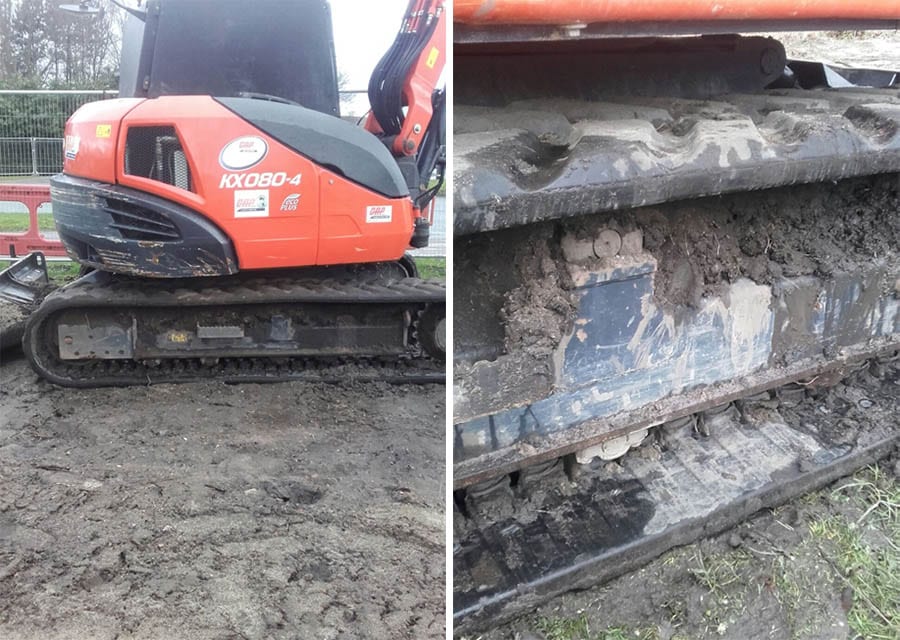
The client provided a pressure washer. The digger was moved to a distance of about two metres from the fence bordering the site. This distance is far enough to prevent splashing washed-out soil off-site and sufficiently short to leave the site safely, e.g., with a reasonably low risk of being re-contaminated. The digger was risen, thus leaving a gap between the trackpads and ground level of about one foot. The appearance of the fragments of track pads and track system after completion of washing are illustrated below. It can be seen that the soil was carefully removed. Other external parts of the digger, e.g. bucket, cabin, etc., have also been cleaned.
After washing, the plywood was deployed under the tracks to minimise contamination while leaving the site.
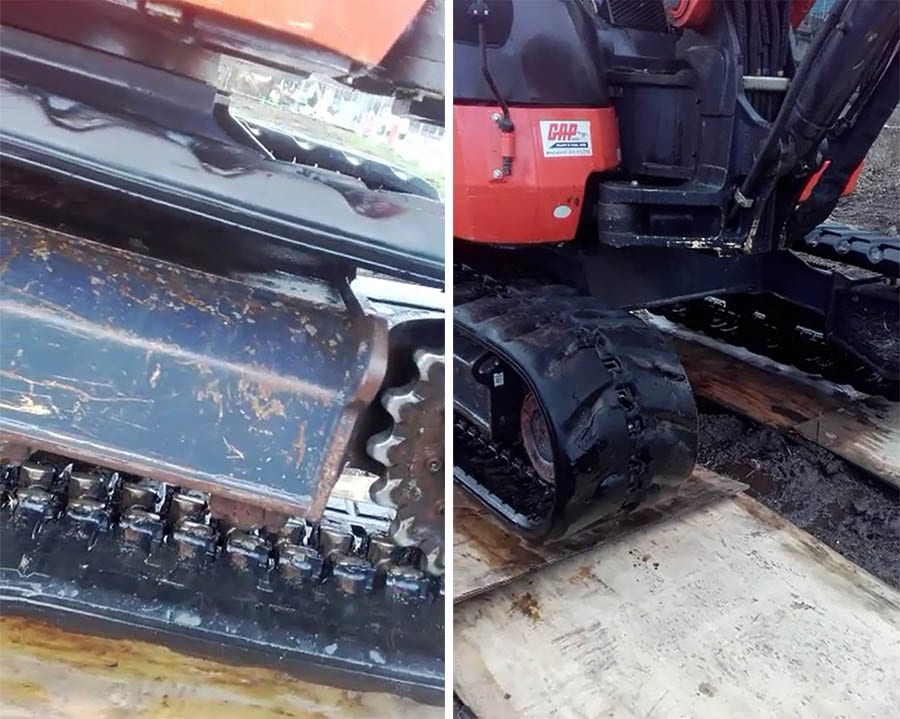
The final set of photographs displays the cleaned digger before safely leaving the site through the plywood paths. That concluded the Supervision of an excavation on a transport site with Japanese knotweed.
